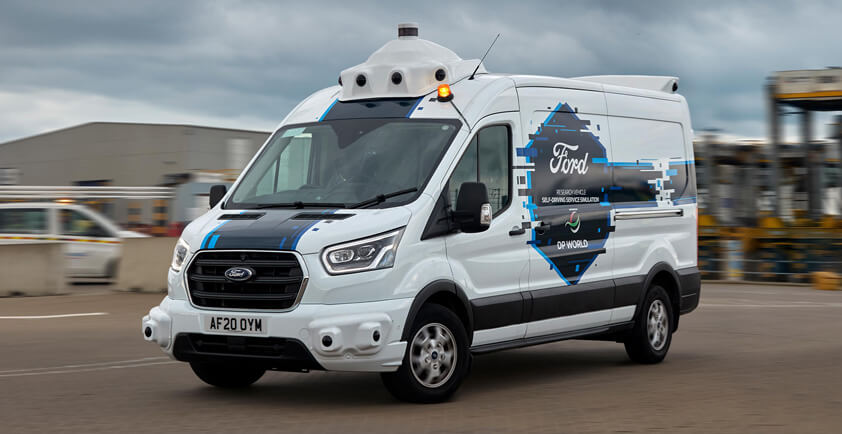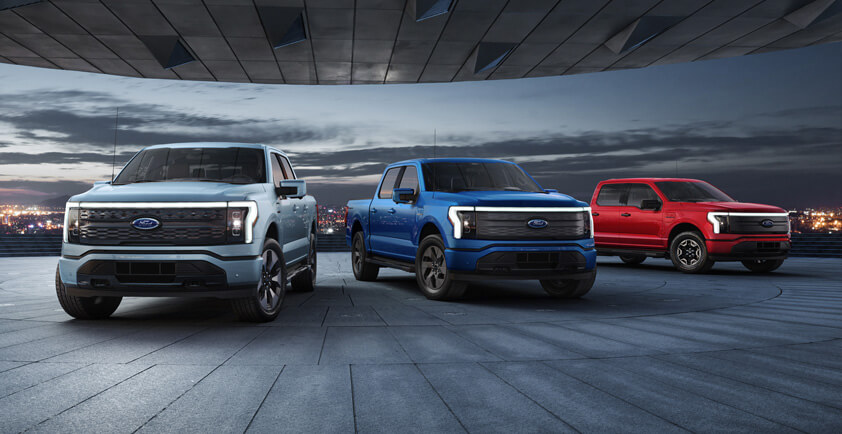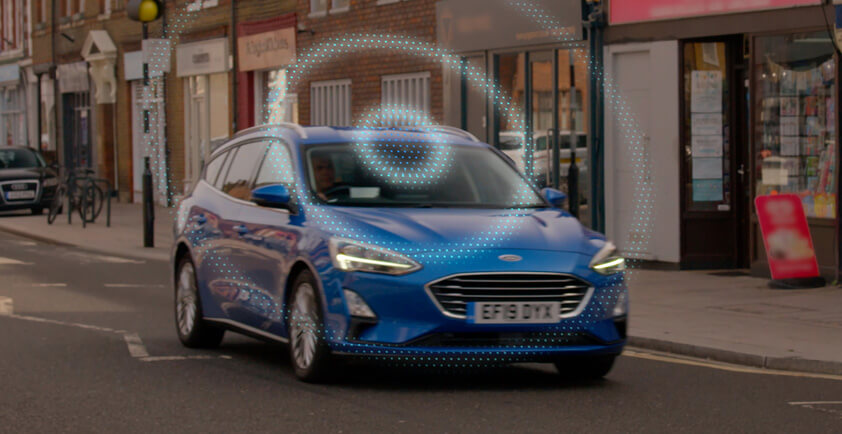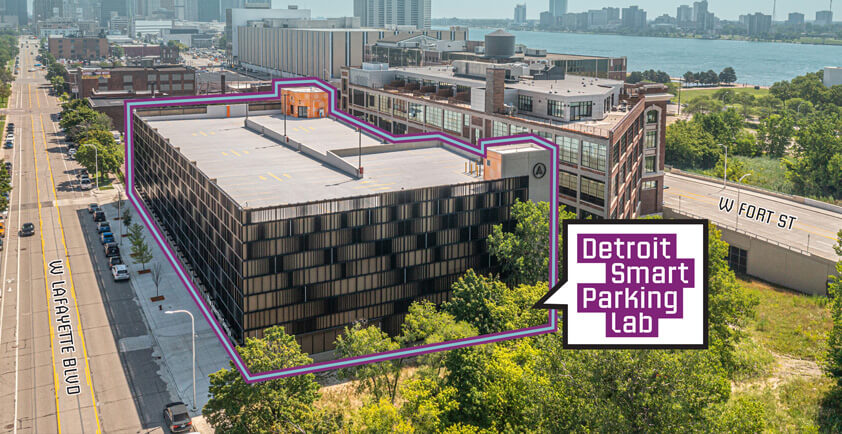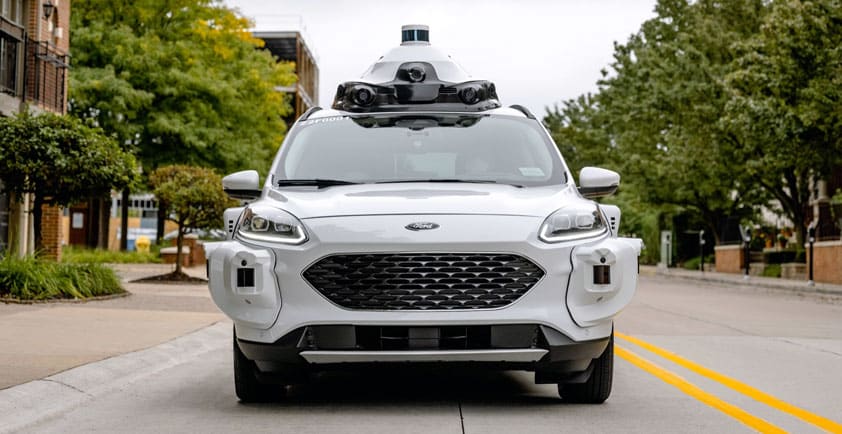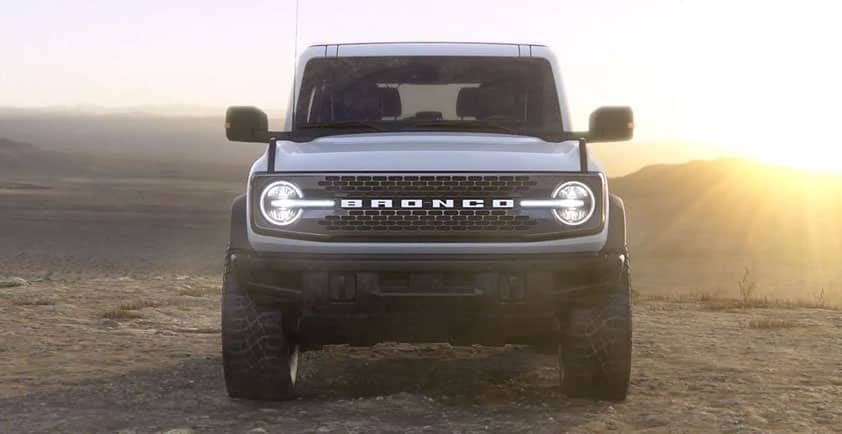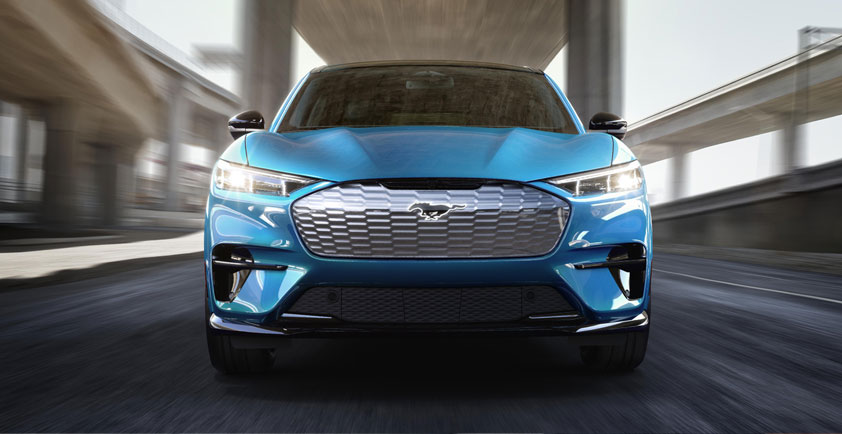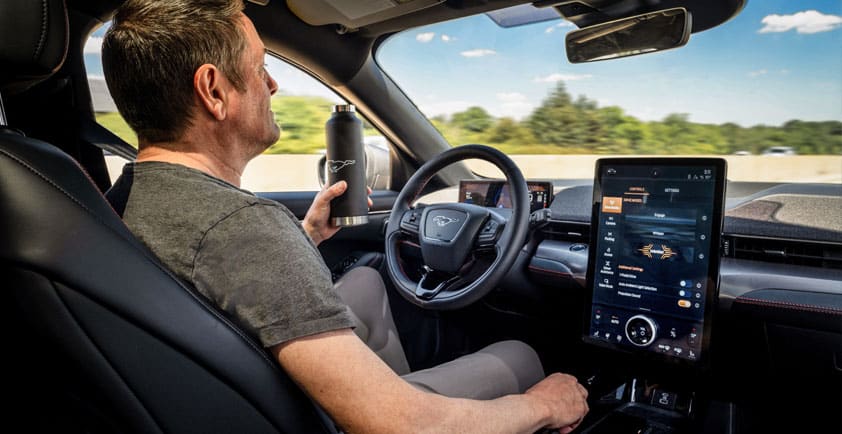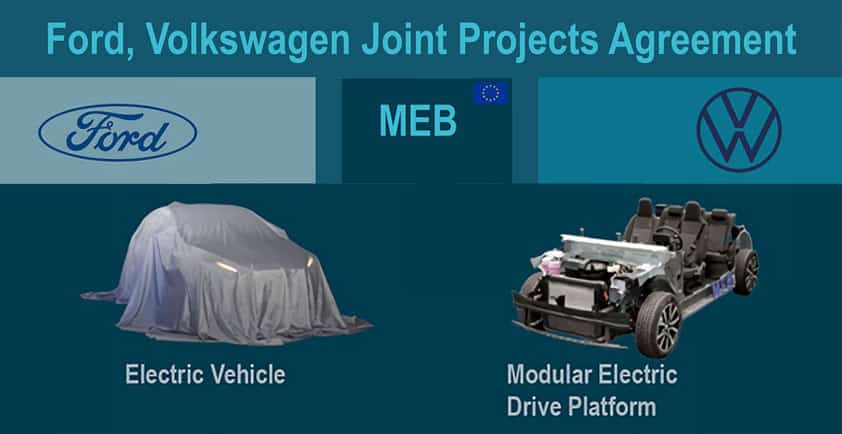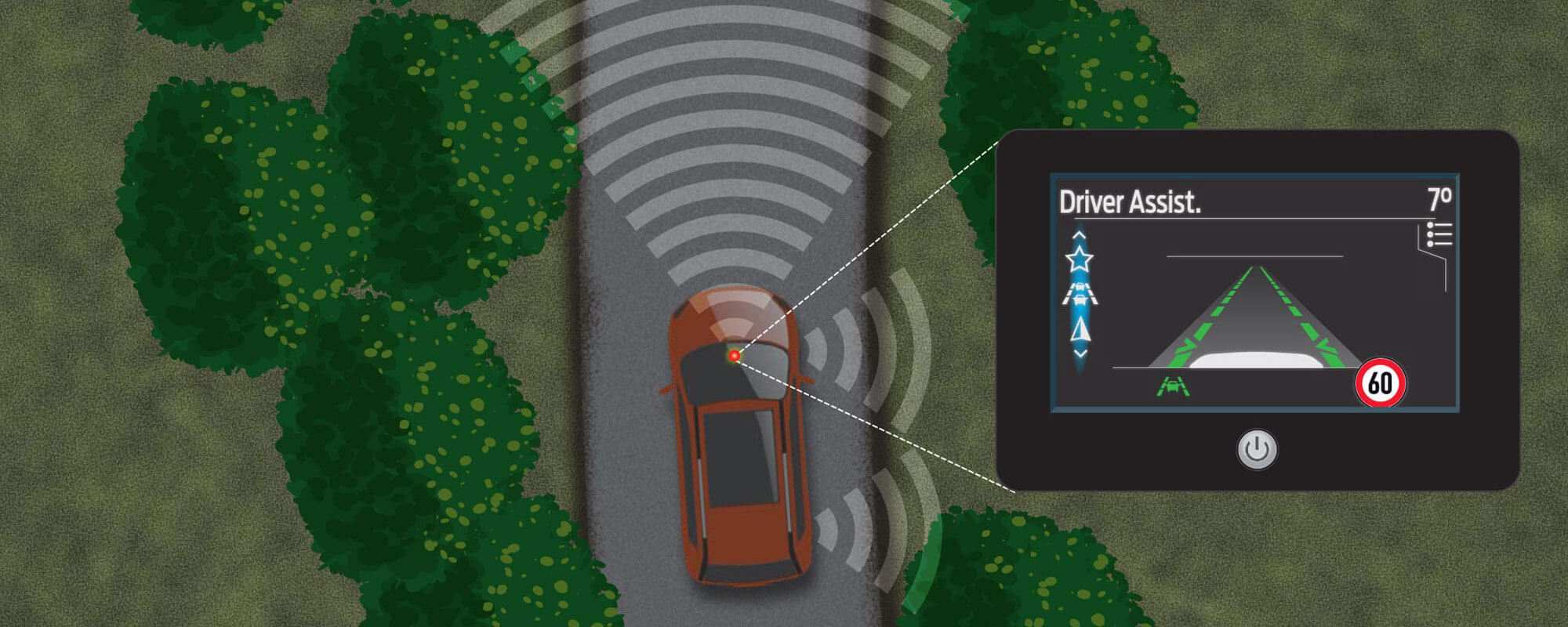
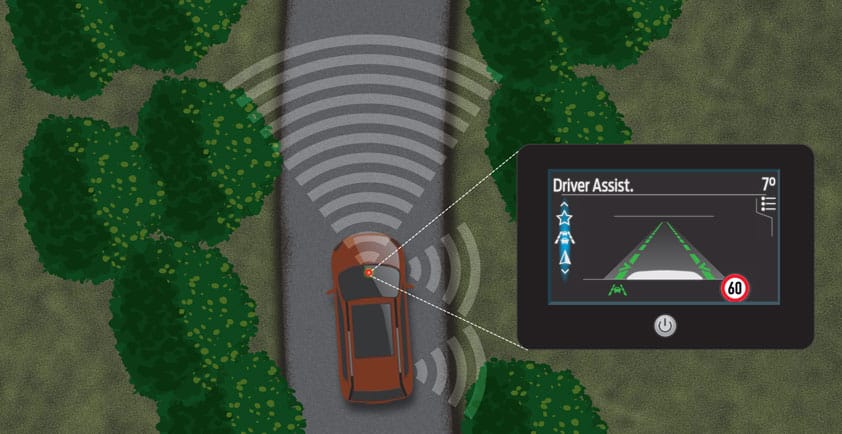
CLOSE TO THE EDGE? NEW TECH HELPS DRIVERS STEER CLEAR OF DITCHES AND DROPS – AND STAY ON THE ROAD
Driving in rural areas can be tricky when unmarked road edges become ragged and give way to open land, muddy ditches and sheer drops. Driving at night – in unlit areas especially – can be a challenge.
Most road fatalities in Europe occur on rural roads and – unlike in urban areas – car occupants make up the biggest share of those fatalities.
Now Ford has introduced new technology to help make rural driving easier. Road Edge Detection scans the road ahead and can gently steer the vehicle back on track when needed.
How it works
Designed for use on rural roads at speeds of 70-110 km/h, Road Edge Detection uses a camera located below the rearview mirror to monitor road edges 50m in front of the vehicle and 7m to the side.
Where a paved road becomes a soft verge, gravel hard shoulder or grass, the system provides gentle steering support as required to prevent the vehicle from drifting off the carriageway.
The system features an advanced algorithm that determines when there are clear structural changes from the road to the area beside the road. It can also provide steering support on marked roads when the lane marking is obscured or hidden by snow, leaves or rain.
If the driver is still close to the edge following initial steering support, the system vibrates the steering wheel, to prompt the driver to steer. At night, the system uses the illumination from the headlights and functions as effectively as during the day.
Road Edge Detection is available in Europe on Explorer, Focus, Kuga and Puma, and will be part of the expanding driver assistance technologies being rolled out to new Ford vehicles.
NEW CAR TECH COULD BE JUST WHAT CYCLISTS WANT – A WARNING THAT HELPS STOP DRIVERS ‘DOORING’ THEM
Every year thousands of accidents are caused by drivers or passengers opening a door into the path of a cyclist. “Car dooring” results in 60 cyclists being seriously injured or killed each year in the U.K. alone, while in Germany it was the cause of around 3,500 accidents during 2018.
This problem is expected to get worse as more people choose to cycle and ride e‑scooters in cities.
Now Ford has developed a technology that could one day make it easier to avoid dooring accidents with vulnerable road-users that also include motorcyclists.
Exit Warning provides visual and audible alerts to road users and vehicle occupants when it detects that opening the door of a parked car might cause a collision; it could also prevent a vehicle door from opening into someone’s path.
How it works
Ford vehicles already feature sensors and technology that can automatically detect and brake for cyclists, and help drivers to know when other road users are passing by their blind spots.
Using these existing sensors, Exit Warning analyses and understands the movements of approaching road users – whether they are riding a bicycle or an e-scooter – on both the driver and passenger sides of the vehicle.
If the system detects that opening the vehicle door could cause a collision, an alarm sounds to warn the driver or passenger of the danger. Bright red LEDs on the wing mirror begin to flash as a visual warning for cyclists and a strip of red LEDs along the inner trim of the door – that becomes visible when the door is opened – provides further warning for passing road users.
Engineers are also testing a new mechanism for the car door that momentarily prevents it from fully opening until the Exit Warning system determines the passing road user is safely clear of the vehicle. The vehicle occupant will be able to manually override this feature in an emergency.
Following testing with drivers and cyclists from within Ford, engineers will be conducting customer clinics in the coming months. Part of the testing will be to ensure that the technology accommodates road users in different markets, taking into account right- and left-hand drive vehicles as well as different road and lane layouts.
Share the Road
Ford’s “Share The Road” campaign seeks to foster harmony between road users and underlines the company’s belief that enabling more people to cycle safely, especially for short journeys, benefits everyone.
Ford recently highlighted the challenges of communication between drivers and cyclists – and how smart thinking could potentially ease tensions and reduce accidents. The Emoji Jacket is a one‑of‑a‑kind wearable that features a brightly lit LED mesh panel to display emojis, indicators and the hazard warning symbol. The prototype jacket enables cyclists to more easily and clearly signal their intent – and their feelings – to drivers and other road users.
The company has also produced an award-winning virtual reality experience so that drivers and cyclists can better understand the challenges of each other’s journeys. “WheelSwap” enables motorists and cyclists to see how inconsiderate driving and riding can be at the least hair-raising –and potentially fatal – for their fellow road users. Initial studies show that after undergoing the experience, nearly all participants said they would change their behaviour.
NEW FORD TRANSIT PARKING TECH MAKES “IT’LL NEVER FIT IN THERE, MATE!” A THING OF THE PAST
Parking a van that is more than one metre longer than a Mondeo wagon in crowded streets or loading bays can be the stuff of nightmares. And even a low-speed bump can cost a business money in lost working time and repairs, with the potential for increased insurance costs, particularly if a third party is involved.
The new Ford Transit takes the stress out of parking with advanced technologies that can also help avoid expensive parking prangs.
Ford’s Active Park Assist technology helps Transit drivers to find a suitably-sized parking space and then automatically steers the vehicle into the spot while the driver controls the throttle and brake. The system helps make light work of parking in a side-by-side space such as a loading bay, or nose-to-tail in a roadside space just 0.8 metres longer than the vehicle.
Additional Transit technologies including Park-Out Assist, Cross Traffic Alert, Side Sensing System* and front and rear wide-view cameras lend operators a hand when pulling out from a space or manoeuvring in crowded urban environments.
Advanced Transit technologies
Available on the latest Transit and Transit Custom models introduced during 2019, Active Park Assist technology functions using 12 ultrasonic sensors around the vehicle. The system can park the van even in scenarios when no roadside kerb is present by lining up with another parked vehicle and works when parking on inclines.
Active Park Assist includes Park-Out Assist, which automatically steers the vehicle out of a parking space while the driver controls the throttle and brake.
Ford’s Cross Traffic Alert warns drivers reversing out of a parking space of vehicles and bicycles that may soon be crossing behind them.
In addition, a Side Sensing System delivers audible and visual warnings of nearby obstacles to help drivers manoeuvre at low speed.
Transit’s front wide-view camera and rear wide-view camera display to the driver wide-angle views that make it easier to spot approaching vehicles, pedestrians or cyclists at a blind junction or when exiting a parking space or driveway.
The rear-view camera is high-mounted above the cargo doors to offer better visibility when reversing, in particular with the rear doors open.
Helping customers’ businesses thrive
The new generation of electrified and connected Transit and Transit Custom vans launched in 2019 and was developed to help businesses thrive in a modern operating environment.
The new Ford Transit 2-tonne van can carry more, uses less fuel and is easier to drive and operate than ever, supported by fuel-efficient EcoBlue diesel powertrains including segment-first EcoBlue Hybrid 48-volt technology and innovative driver assistance features.
An enhanced Ford Transit Custom 1-tonne van also delivers Ford’s latest EcoBlue and new EcoBlue Hybrid powertrains, alongside available technologies including the FordPass Connect on-board modem that can help operators maximise vehicle efficiency and utilisation.
The electrified Transit Custom Hybrid range – including the Transit Custom Plug-In Hybrid and EcoBlue Hybrid – is International Van of the Year 2020.
Last year was Ford’s best for commercial vehicle sales in 25 years – and Ford’s fifth year as Europe’s No.1 commercial vehicle brand.


